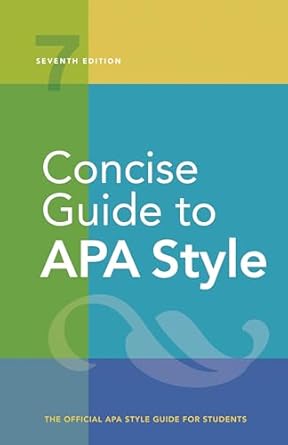[toc]
clear concise writing a guide for academics
Concise Guide to APA Style: 7th Edition (OFFICIAL)
Page 60 Review
The Art of Concise and Clear Writing: A Critical Analysis
Academic and technical writing demands precision and clarity.
This excerpt emphasizes the importance of deliberate word choices and consistency in language to ensure that your message is accurately conveyed to your audience.
Let’s delve into the key aspects highlighted in this piece.
The Power of Simplicity: Short Words and Sentences
The text aptly begins by stating that “Short words and short sentences are easier to comprehend than long ones.” This is a fundamental principle of effective communication.
Complex sentences and convoluted vocabulary can obscure the meaning, making it difficult for the reader to grasp the core message.
However, the text also acknowledges that “a long technical term… may be more precise than several short words, and technical terms are inseparable from scientific reporting.” This highlights the delicate balance between simplicity and accuracy in technical writing.
Navigating the Jargon Jungle: Clarity for All
The excerpt warns against excessive use of jargon, noting that “a paper with too much jargon or terminology familiar to only a few specialists does not sufficiently contribute to the literature because its meaning is unclear.” The purpose of academic writing is to disseminate knowledge, and using language that is inaccessible to a broader audience defeats this purpose.
The text suggests that “the technical terms in a paper should be either readily understood by readers across disciplines or defined for readers who may be unfamiliar with them.” This approach ensures that the information is available to a wider readership.
Precision in Word Choice: Every Word Matters
The piece stresses that “Concise writing must also be clear.
Be deliberate in your word choices, making certain that every word means exactly what you intend.” This underscores the need for careful consideration of the nuances of language.
The example of “feel” being used interchangeably with “think” or “believe” in informal contexts but not in academic writing illustrates this point perfectly.
The text continues, “Likewise, using a word with multiple meanings can cause confusion.
For example, some writers use the word ‘significant’ to mean ‘important,’ whereas others use ‘significant’ only in the context of statistical significance testing; ensure that your intended meaning is clear.” This highlights the importance of avoiding ambiguity in technical writing.
Consistency is Key: Avoiding Unintentional Nuances
The excerpt emphasizes consistency in terminology, advising writers to avoid unnecessary synonyms: “If you use a word or phrase multiple times, do so consistently…
Some writers deliberately use synonyms or near-synonyms to avoid repeating a word or phrase.
The intention is commendable, but in practice the use of synonyms can lead to imprecision: By using synonyms, you may unintentionally suggest a subtle difference.
Therefore, use synonyms with care.” While avoiding repetition is important, clarity should always be prioritized.
Using the same term consistently throughout the text helps to reinforce the intended meaning.
Respectful Language: Sensitivity in Descriptors
The text highlights the importance of respectful language when referring to individuals or groups: “Word choice is especially important when talking about people who are members of specific groups…
Carefully consider the descriptors you use, making sure they are accurate, consistent with current preferred terminology, and in line with how the individuals you are writing about describe themselves.
In no case should you use biased, pejorative, or demeaning language.” This underscores the ethical responsibility of writers to use language that is inclusive and respectful.
Maintaining a Professional Tone: Avoiding Distractions
The excerpt concludes by advising writers to “Strive for a professional tone and professional language…
Avoid heavy alliteration, rhyming, poetic expressions, and clichés.
Use metaphors sparingly…
Avoid mixed metaphors… and words with surplus or unintended meanings…” A professional tone enhances the credibility of the writing and ensures that the focus remains on the content.
Overly stylistic or flowery language can distract from the message and undermine the writer’s authority.
In conclusion, this excerpt provides valuable insights into the art of clear and concise writing.
By prioritizing simplicity, precision, consistency, respect, and professionalism, writers can effectively communicate their ideas and contribute meaningfully to their respective fields.
Buy full ebook for only $18: https://www.lulu.com/shop/american-psychological-association/concise-guide-to-apa-style-7th-edition-official/ebook/product-rmzpq54.html?page=1&pageSize=4
Clear Concise Writing A Guide For Academics
Read more: Academic Citations: Mastering Reports, Ethics, Grants

